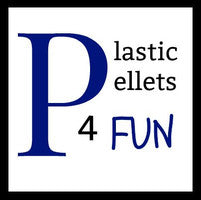OK all you cornhole fanatics! Here we go!!! It's approaching that time of year when we dust off the boards and set up the brackets for the cornhole tourneys. Before you know it we will be tail gating at our favorite football games and tossing those bags like bandits! This discussion will consider the pros and cons of different plastic or poly pellets in the construction of cornhole bags.
Corn vs. Plastic or Poly Pellets:
First of all there are those who believe that only real field corn should be used to fill the bags. After all, the name of the game is "cornhole"...not "plastic or poly pellethole"!!! Well, once again, technology often takes the place of tradition when it comes to entertainment. There is no doubt that real corn feels a bit different vs. plastic or poly pellets. Also, as the corn filled bags age, they break down and create corn dust, which some purists feel is essential to the game. You will hear the purists say "the dust is a must"! Of course I disagree. I would MUCH rather use plastic or poly pellet filler for many reasons. First of all, if you use your cornhole bags frequently, you will inevitably end up with wet bags at some point and then the fun begins. Since corn is a food source, all kinds of mold, mildew, bacteria and critters will start to grow and soon you will be replacing those bags. Do you really want to stop throwing when a little rain comes along...especially on a hot day? High humidity will also feed those critters! This is probably the biggest draw back when using real field corn. Corn will NEVER have the shelf life of plastic or poly pellets....by a long shot. Also, if you go out and buy corn, be sure you freeze it for a few days before you use it or you will have bags full of weavil!!! Not fun to find those little critters "weaving" around in your bags!
Finally, with corn you have no way to "customize" the bag to fit your style and "feel". The feel of the bags as well as the way they bounce and slide on the board cannot be changed by the corn. Corn is corn...and as of this writing there is very little difference between varieties. With plastic or poly pellets you can customize the volume, hardness, and even the " slip" of the bags.
Corn Hole Bag Volume vs. Weight:
The specifications of the cornhole bags comes from the ACA (American Cornhole Association). They specify two cups of corn and a weight of between 14 and 16 oz per bag....period. I am quite sure that in the future they will likely add specifications for plastic or poly pellets, but as far as I know, this has not yet been done. Therefore, if you are going to get REALLY serious and play in tournaments, your choices are corn, corn, or corn. Most people just enjoy the game, however, and for most of us, plastic or poly pellets are a much better choice (I am not biased or anything). With plastic or poly pellets, we can change the volume of the bag significantly by changing the pellets. For example, the bulk density of the heavy white pellets we sell is a killer 11 oz. per cup! This is twice the weight of our clear poly pellets at only 5.5 oz. per cup. If the player wants a "full" feeling bag, he or she can use the lighter pellets and come up with a more rounded and bulky bag. If one wants a flatter and less bulky bag, then the heavy white filled pellets are a much better choice. I have heard from several experts that a bulk density of around 6.5-8 oz per cup is often a preferred weight. For this reason many will mix the pellets to come up with the perfect weight and volume. Recently we announced a brand new product which has a bulk density of 7.5 oz per cup. We did this so that our customers could use one pellet type to fill their bags and have an "average" weight and volume for cornhole bags without have to mix pellets!!! Try them both and see what you think?! Customize the mix to your own specifications if you wish! Have fun with it.
That's the Way the "Bag" Bounces!:
As described above, the density of the plastic or poly pellets can have an impact on the way the bags bounce and slide off of the boards. Also, harder, heavier pellets can have a lower coefficient of friction vs. lighter, softer pellets. All of these factors will impact how the bags bounce and then slide across the boards. Of course the fabric and finish will also have an impact. Our heavy pellets are designed to break down creating dust and smaller fragments over a long period of time, an effort to copy the effect of wear and tear on real field corn. All of these things will have an impact on the way the bags bounce and slide. The best thing to do if you are really serious is to try the different pellets and mixes and see of the "bag bounces"! Most importanly, HAVE FUN!!!
